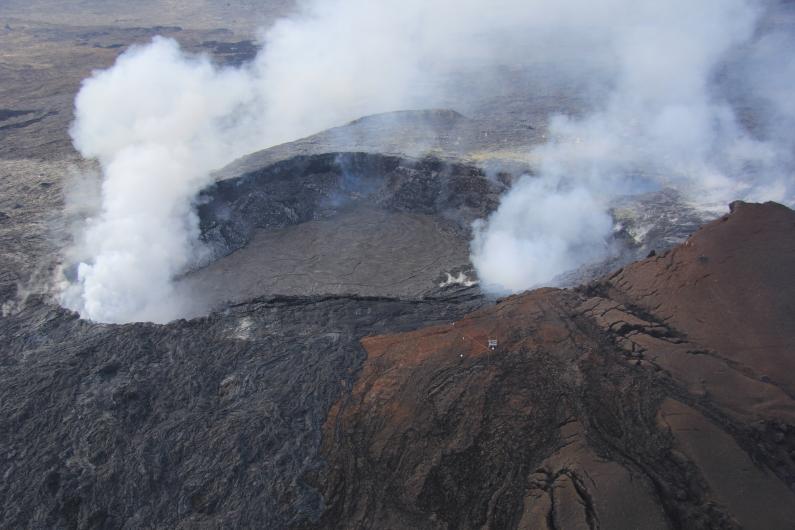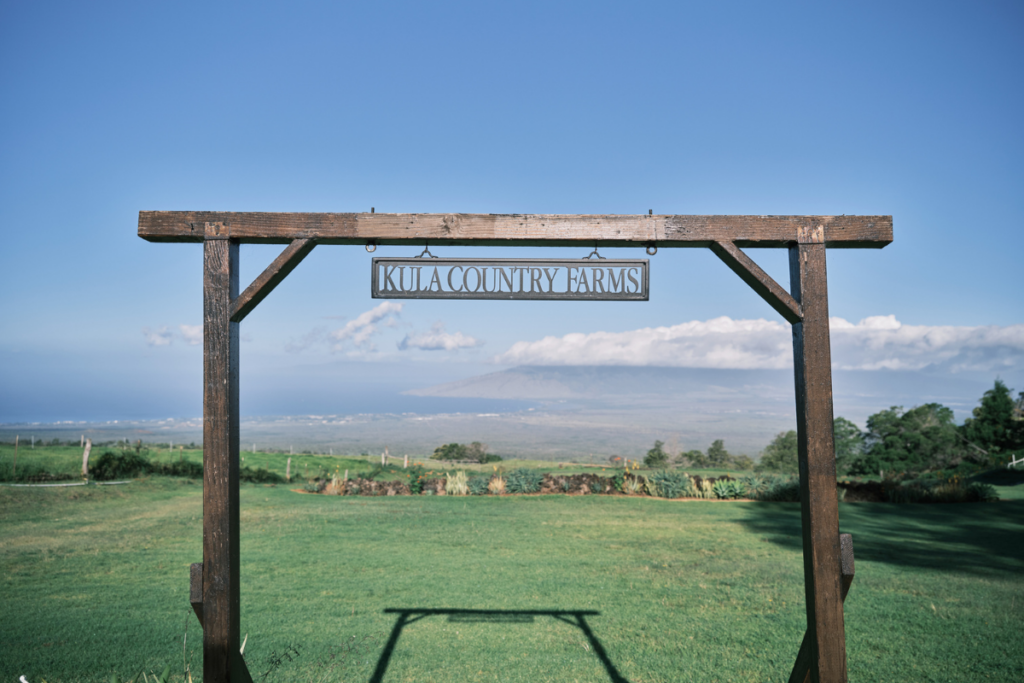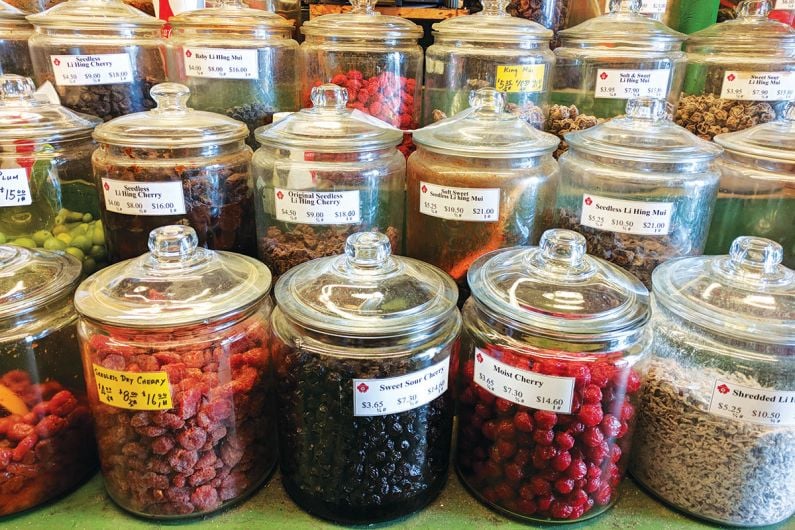Flurry of activity at Kilauea Volcano last week on Hawaii Island

Kilauea Volcano on Hawaii Island, continuously erupting since 1983 and considered one of the world’s most active volcanoes, has not disappointed these last few days. Last Thursday, Aug 27, a large new lava breakout occurred on the north side of its Puu Oo cone; lava broke the surface inside Puu Oo crater in a new eruption; and the summit lava lake in Halemaumau crater has been rising, falling and even spattering with recent seismic activity.
Readers may recall the Puu Oo cone from its June 27, 2014 flow that sent lava northeast from its crater and oozing toward subdivisions, roads and even homes late last year.

and added a new layer to the crater floor.
This photograph looks northeast across the relatively smooth crater floor
toward the vent that erupted,
which is a spatter cone that appears as a faintly visible mound in the fume in the background.
The new Puu Oo cone breakout occurred off of a lava tube supplying distant and ongoing flows. The activity died on the same day, after traveling about 1,640 feet. Lava is still being supplied to a forested area northeast of the crater, but is not near structures and remains within about five miles northeast of the Puu Oo crater. The portion of the lava flow that edged close and threatened residential communities stopped receiving fresh lava in early March.
According to the USGS’s Hawaiian Volcano Observatory’s (HVO) daily updates, none of Kilauea’s lava flows or breakouts from existing flows currently pose a threat to area communities. However, it is unknown how breakout activity—like the one that occurred on Thursday—might impact “the vigor of the distant flows to the northeast,” reports HVO.

formed a large channelized flow, but it did not last long.
The activity died in the evening, the same day, and traveled only about 500 m.
The recent flow is the lighter colored lava mostly left of center in the photograph,
with its most distant tip approaching lower right.
The photograph looks south toward Puu Oo.
Beginning on Friday, Kilauea’s summit experienced some inflation and deflation—an indication that magma below the surface is moving—and seismic tremors have caused some spattering on the summit lava lake, sometimes visible on Hawaii Volcanoes National Park webcams [see below for links].
Unfortunately, unlike in late April, the recent activity at the summit lake is not enough to allow visitors to Hawaii Volcanoes National Park to glimpse lava during the day. While the level of lava filling the Overlook Crater has been rising and falling with recent inflation and deflation, lava levels remain about 165 feet below the crater floor—and can only be seen as an eerie glow from the park’s Jaggar Museum overlook at night.
Still, with all of the recent activity, things could change in the days ahead. If you plan on visiting Hawaii Volcanoes National Park soon, or, if you just want to see if you can spot some of the lake spattering, visit the USGS Hawaiian Volcano Observatory’s Kilauea summit webcams.


